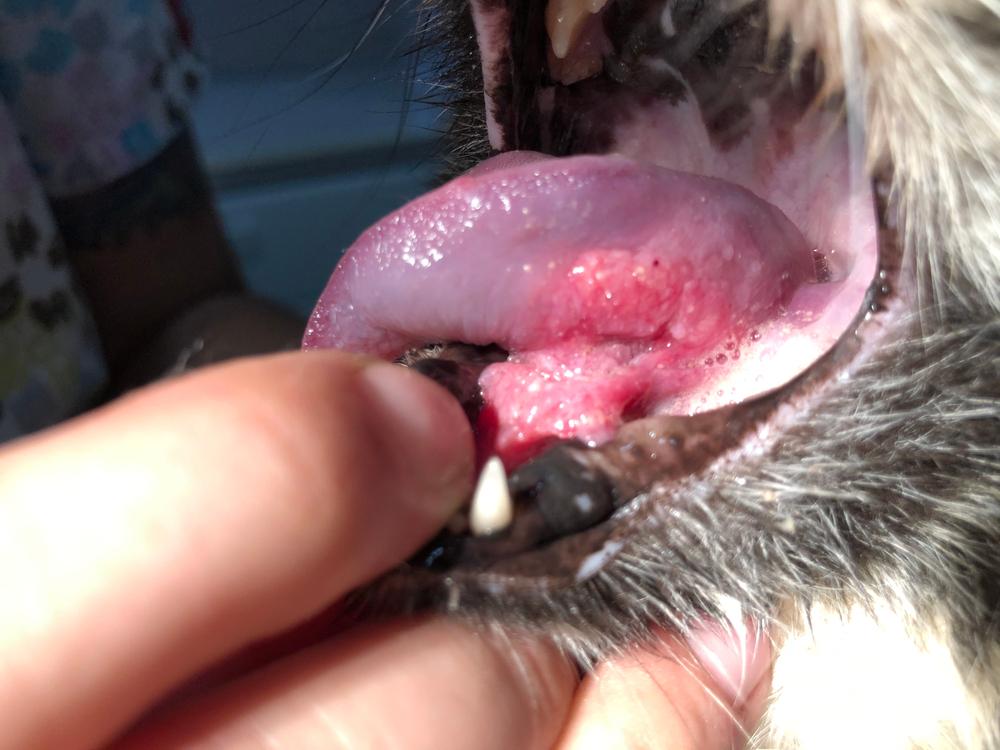

If your cat has ever been diagnosed with squamous cell carcinoma (SCC), you know how overwhelming it can be. This serious form of cancer can impact your cat's comfort, quality of life and long-term health — but understanding the condition is the first step toward managing it effectively. In this article, we'll break down what squamous cell carcinoma in cats is, explore its common forms, discuss potential causes and explain what to expect during diagnosis and treatment. You'll also discover practical tips for prevention and early detection so you can help keep your feline companion as healthy and comfortable as possible.
What Is Squamous Cell Carcinoma?
So, what is squamous cell carcinoma? To understand this condition, it helps to first know what squamous cells are. These thin, flat cells are found in the skin's outer layer (epidermis) and also line internal surfaces, including the mouth.
In cats, SCC is a malignant tumor that can appear in different parts of the body, most commonly:
Oral squamous cell carcinoma (inside the mouth)
Cutaneous squamous cell carcinoma (on the skin)
Whether in the mouth or on the skin, SCC can appear as pink or red, irritated masses that may bleed easily. These tumors can be aggressive, growing large, invading surrounding tissues and often causing pain and discomfort.
What Are the Signs of Squamous Cell Carcinoma in Cats?
The signs of SCC vary according to where the tumor is located. Keep in mind that many of the signs listed below can also result from non-cancerous conditions. If you notice any of these signs in your cat, contact your veterinarian promptly to schedule a visit.

Oral SCC
Oral tumors in cats can be difficult to detect early, but signs to watch for include:
Increased drooling, with or without blood
Bad breath
Weight loss
Dropping food from the mouth
Chewing on one side
Decreased appetite
Swelling on the outside of the jaw (upper or lower)
Cutaneous SCC
Cutaneous squamous cell carcinoma generally presents more easily visible signs, including:
A suspicious swelling or mass
A patch of hair loss with poorly defined edges
A wound that doesn't heal, such as an oozing scab
Lesions on areas with thin fur, such as the temples, nose, ears, eyelids or lips
General Signs of Cancer in Cats
While not specific to SCC, many cancers in cats can cause one or more of the following signs:
Noticeable lumps or bumps
Bleeding and/or abnormal discharge from any opening in the body
A bloated abdomen
Difficulty urinating or defecating
Difficulty breathing
Vomiting or diarrhea
Changes in appetite
Weight loss
Decreased grooming or matted fur
Non-healing wounds
Behavioral changes
What Causes Feline Squamous Cell Carcinoma?
Like many other forms of cancer, the exact cause of SCC in cats is unknown. Rather than a single cause, it's believed to result from a combination of genetics and environmental factors. SCC develops when mutations in a cat's cellular DNA disrupt normal cell function and regulation, leading to uncontrolled growth and tumor formation.
Because the risk of cellular mutations increases with age, older cats are more likely to develop SCC than younger cats and kittens. According to Dr. Wendy Brooks, DVM, DABVP, the average age at diagnosis for oral SCC in cats is approximately 12.5 years.
Risk Factors for Feline SCC
There are several known risk factors that may increase a cat's chances of both cutaneous and oral SCC. Exposure to sunshine is the number one risk factor for cutaneous SCC in cats. Ultraviolet (UV) radiation damages DNA in squamous cells, leading to skin cancer. Burns and skin trauma may also contribute to the development of cutaneous SCC. White or light-colored cats, hairless breeds and cats who spend significant time in direct sunlight are especially at risk.
Poor oral health is strongly linked to oral SCC. Secondhand exposure to smoke is also a major risk factor. Other risk factors for oral SCC include flea collars, chronic dental disease and viral infections, such as calicivirus and feline leukemia virus (FeLV).
Preparing for Diagnosis and Treatment
Whether you discover a suspicious mass at home or your vet finds it during a routine visit, confirming an SCC diagnosis requires microscopic examination at the cellular level. Your vet will guide you through the diagnostic process, which may include several tests:
Fine-needle aspiration of the mass and/or nearby lymph nodes to collect cells for analysis.
Biopsy of the tumor to remove a small tissue sample for microscopic examination by a board-certified pathologist
Radiographs (X-rays) and possibly other imaging techniques to determine whether the cancer has spread or involves surrounding bones
Routine blood work and urinalysis to check for signs of systemic illness
Treatment for squamous cell carcinoma depends on several factors, including the tumor's size, location, whether it has spread and the extent of local tissue and structure involvement. Your vet will develop an individualized treatment approach based on your cat's unique case.
Generally speaking, surgical removal of the tumor is the primary treatment goal, although additional therapies — such as radiation therapy or chemotherapy — may be recommended depending on the tumor's behavior and location. Oral SCC tends to carry a more guarded prognosis compared to cutaneous SCC, largely because oral tumors tend to invade nearby bones, such as the jaw, making complete removal more challenging.

Preventing Squamous Cell Carcinoma in Cats
While not all cases of SCC can be prevented, certain lifestyle and health practices can significantly reduce your cat's risk — especially if they're light-colored or hairless, or spend time outdoors. Here are some tips:
Avoid smoking around your pets: Carcinogens from tobacco smoke can increase cancer risk in cats.
Limit sunlight exposure: This is especially important for light-colored and hairless cats. Keep them indoors during peak sun hours and provide shaded outdoor areas.
Schedule routine veterinary checks: Your vet is trained to recognize early signs of trouble before they become obvious, so regular check-ups are essential to early detection.
Stay current on vaccinations: Some viruses have been linked to the development of SCC.
Establish a grooming routine: Brushing your cat and checking for unusual lumps, bumps or wounds can help with early detection.
Prioritize cat dental care: You may wonder, "Do I need to brush my cat's teeth?" The answer is yes — brush your cat's teeth regularly to maintain oral health and reduce inflammation, a potential contributor to oral SCC.
Follow through with professional dental cleanings: There's no substitute for a thorough, professional cleaning under anesthesia, which supports long-term oral and overall health.
Protecting Your Cat's Health and Well-Being
Squamous cell carcinoma in cats is a serious condition, but being informed empowers you to act quickly and confidently if your cat shows signs. Staying attentive to changes in your cat's health and maintaining regular veterinary care can make a meaningful difference in outcomes. If you have any concerns, don't hesitate to reach out to your vet — they're your best partner in protecting your cat's well-being.






















